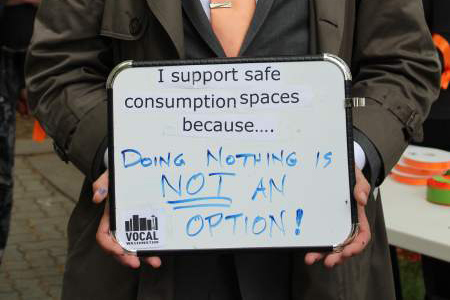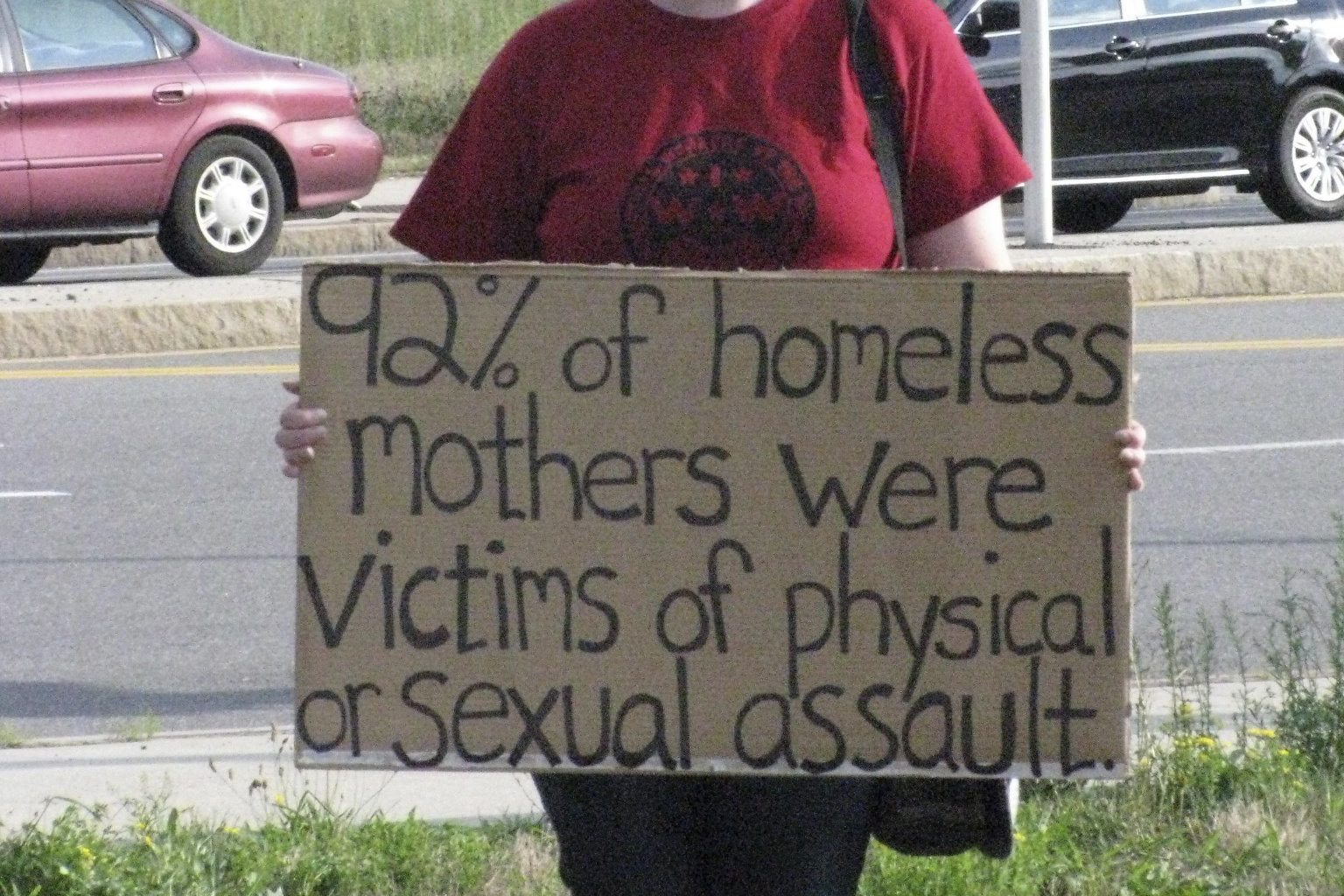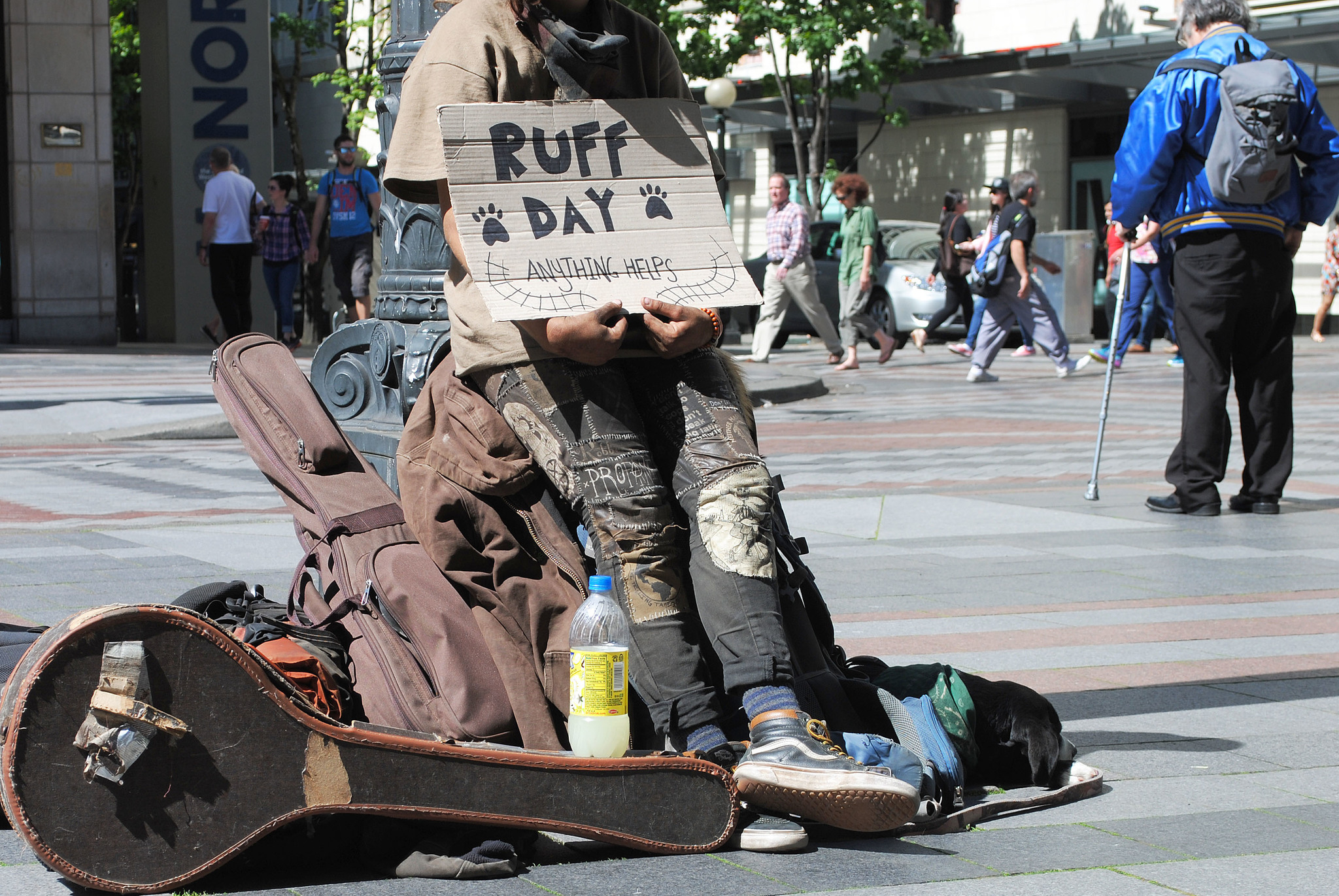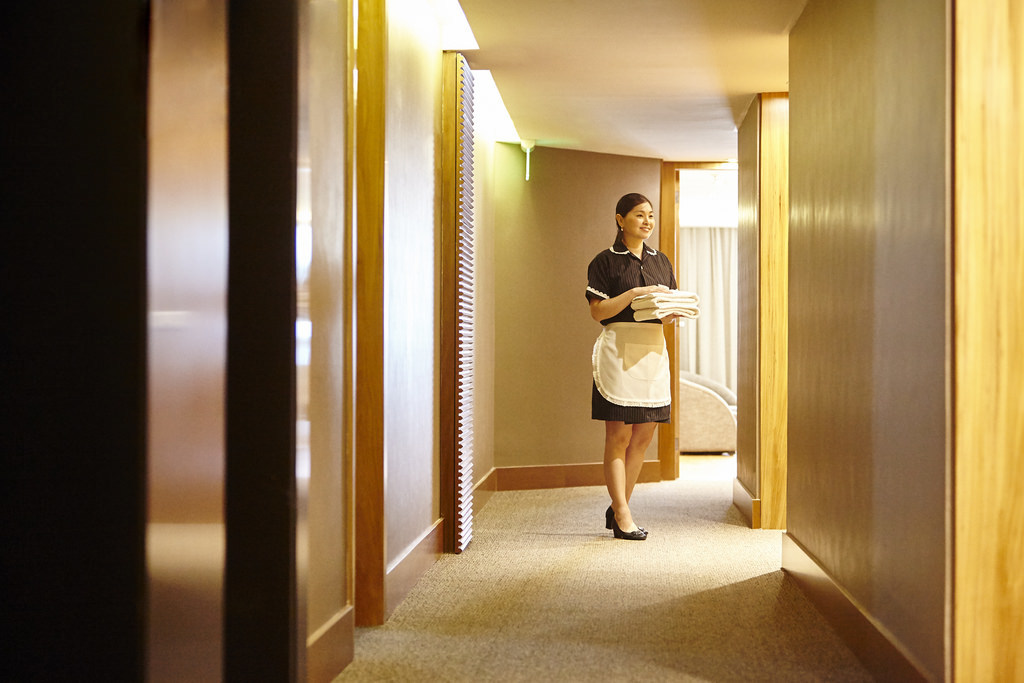Orange ribbons lined the fence of City Hall Park today, symbolizing those who have died or been incarcerated because of the War on Drugs. The ribbons, tied to plastic netting that temporarily protects re-planted park grass, was part of a rally put on by the drug policy advocacy group VOCAL WA in support of safe drug consumption sites. Perhaps thirty people attended.
Safe drug sites are clean locations where people can use illicit drugs under medical supervision and without fear of arrest. The sites also include counselors who can connect users to services ranging from housing to drug treatment. By most measures, the safe drug site that’s been operating in Vancouver, B.C. since 2003 has been a huge success.
At today’s rally to bring that same model to Seattle, community members spoke out on the damage of the War on Drugs and the importance of safe drug sites.
“The War on Drugs has not been a war on drugs,” said Enrique Gonzalez, Community Advocate at the Public Defender Association, which helps organize VOCAL. “It’s been a war on people.”
Leonard King agrees. The Real Change vendor said he was raised in Chicago during the 1980s in a family ravaged by crack addiction. King said he supports safe drug sites as a way to keep other families from going through the same tribulations. “If they have safer environments where it’s sanitary for people to use” drugs, he said, “…it opens their eyes to ‘Hey, maybe I have a problem, I need some help.’ [And] if they continue to use, at least they’re safe, they’re keeping their bodies clean.”
Advocates of the safe-use sites hope that the service will not only prevent deaths but connect users with services that could lead them to recovery.
“If somebody doesn’t want to stop using, you can send them to treatment as many times as you want—they’re not gonna stop using,” said Mikel Kowalcyk. “So the point is to build the relationship with someone so if and when they decide that they want to be clean, we can help them.”
Kowalcyk is the screening and outreach coordinator for Law Enforcement Assisted Diversion (LEAD), which diverts low-level drug and prostitution arrestees into services and counseling rather than jail. Begun in 2011, the program has proven effective at reducing both recidivism and taxpayer expenses. Kowalcyk said she saw safe drug sites as “kind of the same thing” as LEAD because both programs “meet people where they’re at.”
“You meet people, they’re using drugs, you work with them when they’re ready to do something different,” she said, describing LEAD. “…If someone is using dope in an alley, they’re not gonna have that conversation. If they’re inside [a safe drug site] with social workers, there’s a chance to have that conversation.”
King agrees. “If my mom, back in the ‘80s, ‘90s, had a safer place to use those drugs and maybe had a counselor by her side to help lead her to recovery,” he said, “it wouldn’t have taken her so long to get [help].”
Of course, being a crack user, King’s mother could only have been helped by safe drug sites that allow smoked drugs, not just injection drugs. VOCAL organizer Patricia Sully has argued that safe drug sites which allow only injections, while logistically easier to instititue, would effectively be racist.
You can see our prior coverage of the push to open safe drug sites in Seattle here and here. We’ve editorialized in favor of safe drug sites and ending the War on Drugs here.








